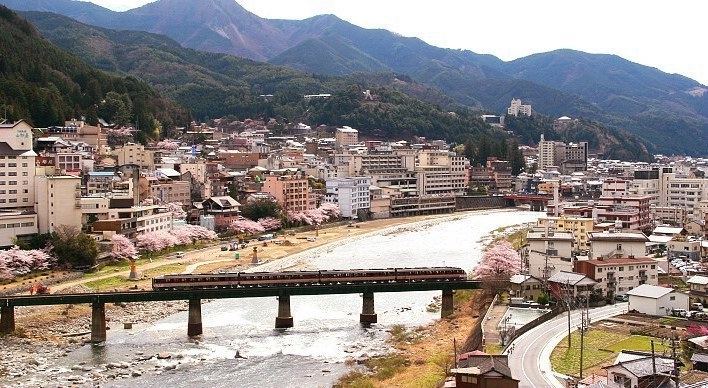Country Japan Website www.city.gero.lg.jp Local time Monday 1:26 PM | Area 851.1 km² | |
 | ||
Weather 12°C, Wind SW at 11 km/h, 54% Humidity Points of interest Onsen‑ji Temple, Yuamiya, Onsen Museum, Curegarden Open Air Bath, Gero Hot Spring Shrine | ||
Historical japanese village of yesteryear gero gifu
Gero (下呂市, Gero-shi) is a city in Gifu Prefecture, Japan. The city is famous for its hot springs. The Hida River runs throughout the city.
Contents
- Historical japanese village of yesteryear gero gifu
- Map of Gero Gifu Prefecture Japan
- History
- Industry
- Local government
- Rail
- Highway
- Domestic
- International
- Within Japan
- References
Map of Gero, Gifu Prefecture, Japan
As of July 2011, the city has an estimated population of 35,906 and a population density of 42 persons per km². The total area is 851.06 km².
History
The modern city of Gero was established on March 1, 2004, from the merger of the former town of Gero, absorbing the towns of Hagiwara, Kanayama and Osaka, and the village of Maze (all from Mashita District).
Industry
Gero's major industry is tourism. It is known throughout Japan for its hot springs known as Onsen, leading many tourists to visit the area each year. Forestry and agriculture also play significant roles in the local economy. Gero has many hotels that can be visited by guests that are looking for accommodations near the hot springs. Large tubs are located in some hotels allowing couples to bathe together. Some hotels lend yukatas to the couples. It's not unusual to see people wearing yukatas on the streets of Gero and even in some stores. Besides those in hotels, there are many inexpensive and convenient onsens located near railway stations, residential areas, and commercial centers up and down the valley.
Local government
The current mayor of the city is Makoto Nomura. He is the second mayor of the city and is currently serving his first four-year term. In April 2008, he replaced Ryōji Yamada, who only served one term as the first mayor of the city.
The city council is made up for 21 members elected from separate districts within the city. City council sessions are held four times a year in March, June, September and December.
In the prefectural assembly, the city of Gero is in a separate district from neighboring municipalities and has one representative.
Rail
Because of previous mergers with nearby towns, the city of Gero now has eight train stations on JR Central's Takayama Main Line:
Highway
Three national routes (41, 256 and 257) and fourteen prefectural routes run through the borders of the city.
